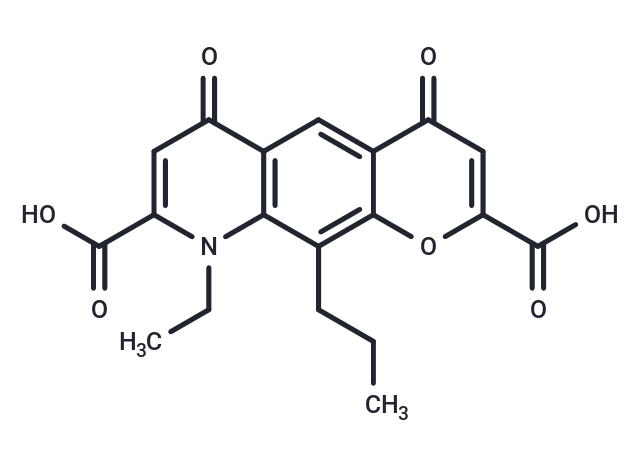Shopping Cart
- Remove All
 Your shopping cart is currently empty
Your shopping cart is currently empty

Nedocromil (FPL 59002) inhibits the action or formation of multiple mediators. Which including histamine, leukotriene C4 (LTC4), and prostaglandin D2 (PGD2).

| Pack Size | Price | Availability | Quantity |
|---|---|---|---|
| 5 mg | $64 | In Stock | |
| 10 mg | $97 | In Stock | |
| 25 mg | $213 | In Stock | |
| 50 mg | $347 | In Stock | |
| 100 mg | $547 | In Stock |
| Description | Nedocromil (FPL 59002) inhibits the action or formation of multiple mediators. Which including histamine, leukotriene C4 (LTC4), and prostaglandin D2 (PGD2). |
| Targets&IC50 | Histamine:2.1 μM(IC30), PGD2:1.9 μM(IC30), LTC4:2.3 μM(IC30) |
| In vitro | Nedocromil suppresses the release of histamine, LTC4, and PGD2 from mast cells challenged with antigen with IC30 values of 2.1 μM, 2.3 μM, and 1.9 μM, respectively. It also has anti-human IgE with IC30 values of 4.7 μM, 1.3 μM, and 1.3 μM, respectively[1]. |
| In vivo | Nedocromil can obviously improve cardiac function in mice with diabetic cardiomyopathy, but the treatment cannot restore normal function. Nedocromil-treated diabetic mice display obviously improved heart function compared with controls. However, the cardiac function of Nedocromil-treated diabetic mice remains significantly impaired when compared with normal mice [2]. |
| Alias | FPL 59002 |
| Molecular Weight | 371.34 |
| Formula | C19H17NO7 |
| Cas No. | 69049-73-6 |
| Smiles | CCCc1c2oc(cc(=O)c2cc2c1n(CC)c(cc2=O)C(O)=O)C(O)=O |
| Relative Density. | 1.472 g/cm3 |
| Storage | Powder: -20°C for 3 years | In solvent: -80°C for 1 year | Shipping with blue ice. | ||||||||||
| Solubility Information | DMSO: 1 mg/mL (2.69 mM), Sonication is recommended. | ||||||||||
Solution Preparation Table | |||||||||||
DMSO
| |||||||||||

Copyright © 2015-2025 TargetMol Chemicals Inc. All Rights Reserved.